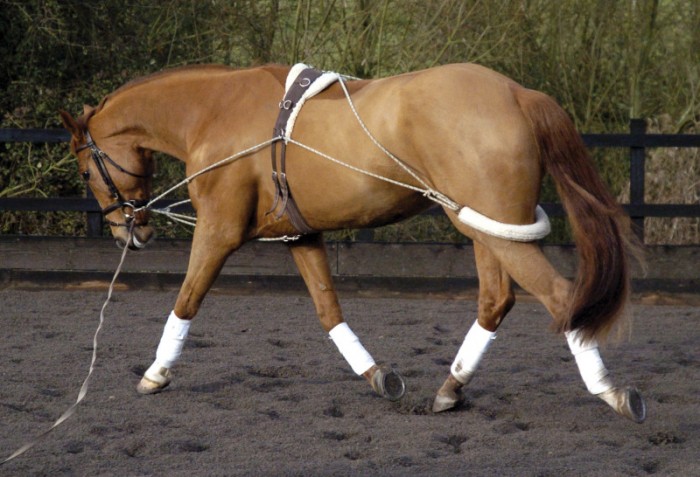
The effects of training aids on the longissimus dorsi
Problems in the thoracolumbar spine of the horse are often caused by the stabilizer muscles, often involving the longissimus dorsi (long back muscle). Many people report positive outcomes on back problems with the use of aids, but this has never been researched. Therefore this article aims to investigate the effect of aids (specifically side reins and pessoa) on the activity of the longissimus dorsi.
Nine horses were lunged in walk and trot under four conditions: without aids; with side reins; with full pessoa; with the back strap of the pessoa. EMG data was recorded for the longissimus dorsi at the level of T16 with each stride while lunging. Electromyography (EMG) is an technique for evaluating and recording the electrical activity produced by skeletal muscles.
The surprising results found were that using training aids did not significantly increase the activity in the longissimus dorsi. At walk, the EMG intensity was the most for the control condition and at trot the EMG intensity was the highest for the control and the half pessoa conditions. However, a significantly higher activity level was found in the longissimus dorsi on the inside of the circle as compared to the outer muscle when lunging in a circle. Therefore it is concluded that using training aids does not necessarily increase the use of the longissimus dorsi.
Expert opinion by Els Smet
The results found contradict the hypothesis that using aids increases the activity of the longissimus dorsi. An explanation for this could be that the stride length changed with the use of aids thereby minimizing activity in the longissimus dorsi. However, it is possible that using aids has an effect on the deeper back muscles, such as the multifidus.
> From: Cottriall et al., Comparative exercise physiology 5 (2008) 111-114. All rights reserved to Research Gate. Click here for the online summary.


